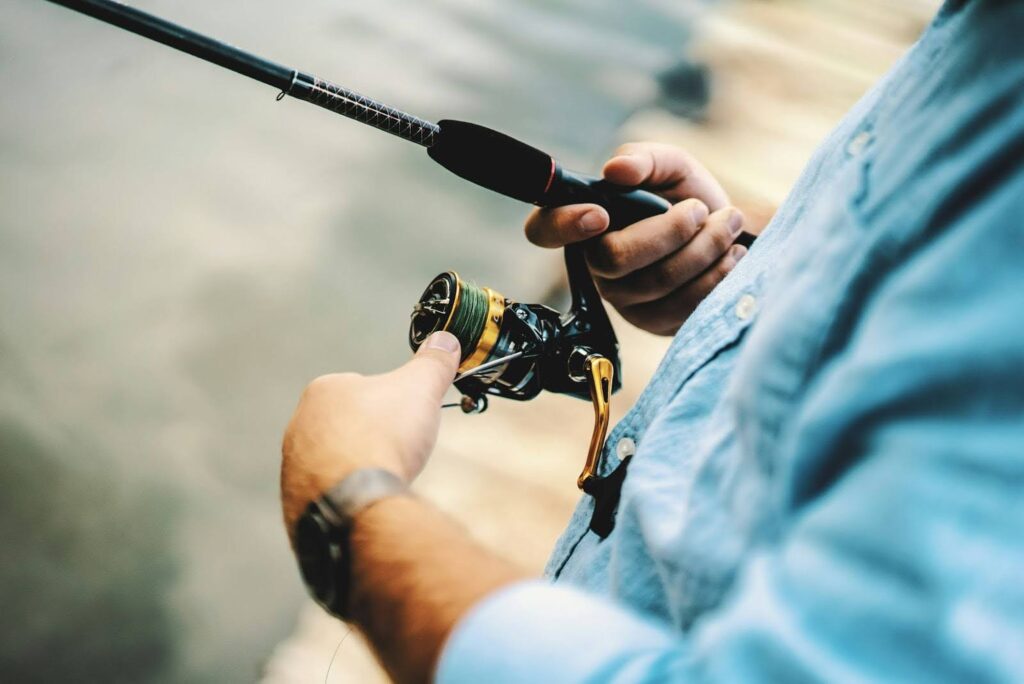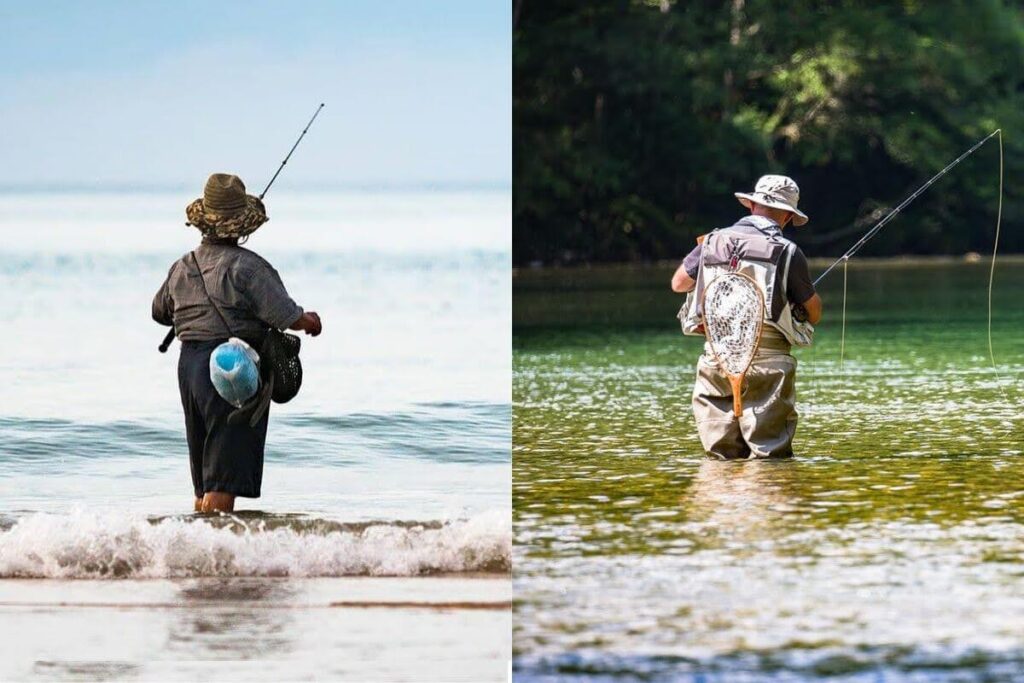Most anglers know the importance of selecting the proper fishing line for a successful day on the water. However, many may not realize that using the right line is crucial not only for freshwater fishing but also for saltwater fishing. The type of fishing line you choose can greatly impact your fishing experience and ultimately determine whether you reel in that prized catch or come back empty-handed. In this blog post, we will discuss the significance of using the right fishing line for both freshwater and saltwater fishing, as well as provide tips on selecting the best line for your next fishing excursion.
Understanding Fishing Lines
Types of Fishing Lines
A crucial aspect of fishing that often gets overlooked is the selection of the right fishing line. There are several types of fishing lines available in the market, each with its own set of characteristics and benefits. To make an informed decision, it is vital to understand the differences between them. Here is a breakdown of the most common types of fishing lines:
| Nylon Monofilament | Durable and Stretchy |
| Fluorocarbon | Invisible underwater and Abrasion-resistant |
| Braided | Thin and Strong |
| Fused | High sensitivity and Low stretch |
| Wire | Stiff and Great for toothy fish |
Thorough research is key when choosing the right fishing line for your specific needs. To ensure a successful fishing experience, consider the type of fish you are targeting, the fishing conditions, and your personal preference. Thou, with the right line, you can improve your chances of landing that prized catch.
Factors Affecting Line Choice
Understanding the factors that influence the choice of fishing line is imperative for every angler. Several key elements play a significant role in determining the most suitable line for your fishing endeavors. To make an informed decision, consider the following factors:
- Targeted fish species
- Fishing location and environment
- Fishing technique
- Budget constraints
- Personal preference
Thou, by carefully evaluating these factors, you can select a fishing line that best suits your needs and maximizes your chances of success.
Freshwater Fishing Line Considerations
Freshwater Environments and Line Degradation
Some key considerations when choosing a fishing line for freshwater environments include understanding how various factors such as water temperature, acidity levels, and the presence of debris can impact the durability and lifespan of different fishing lines. To ensure optimal performance and longevity, it is important to select a fishing line that can withstand the specific conditions of the freshwater environment you will be fishing in.
Recommended Lines for Freshwater Fishing
Line selection plays a crucial role in the success of your freshwater fishing endeavors. When choosing a fishing line for freshwater fishing, it is crucial to consider factors such as line diameter, strength, stretch, and visibility. Fluorocarbon lines are popular for their low visibility and abrasion resistance, making them ideal for clear waters and fishing near structures. Monofilament lines, on the other hand, offer excellent buoyancy and stretch, making them suitable for techniques like topwater fishing and baitcasting.
Saltwater Fishing Line Considerations
Saltwater Conditions and Line Durability
All fishing lines are not created equal, especially when it comes to saltwater fishing. Saltwater conditions can be harsh on fishing lines due to the corrosive nature of salt. Therefore, it is crucial to choose a fishing line that is specifically designed to withstand these challenging environments. Look for lines that are labeled as saltwater-resistant or corrosion-resistant for durability and longevity.
Selecting the Ideal Line for Saltwater Fishing
When opting for the ideal line for saltwater fishing, consider the type of fish you are targeting, the water depth, and the fishing technique you will be using. Monofilament lines are versatile and stretchable, making them suitable for a variety of fishing applications. Fluorocarbon lines are nearly invisible underwater and sink quickly, ideal for bottom fishing or targeting wary fish. Braided lines offer superior strength and sensitivity, making them perfect for casting long distances or fishing in heavy cover.
To maximize your success in saltwater fishing, always choose a fishing line that is durable and suitable for the specific conditions and fish species you will encounter. By selecting the right line for your saltwater fishing excursions, you can increase your chances of landing that trophy catch and enjoy a more rewarding fishing experience.
Expert Tips for Line Management

Despite the type of fishing line you choose, proper line management is crucial for a successful fishing experience. Here are some expert tips to help you manage your fishing line effectively:
- Always check your line for any signs of wear and tear before each fishing trip.
- Properly spool your line on the reel to prevent tangles and ensure smooth casting.
- Regularly clean your line with a damp cloth and mild soap to remove dirt and debris that can weaken the line.
- Store your fishing line in a cool, dry place away from direct sunlight to prevent UV damage.
This will help prolong the life of your fishing line and maintain its performance on the water.
Maintenance and Care for Longevity
Care for your fishing line by regularly inspecting it for damage, cleaning it after each use, and storing it properly. By taking these simple steps, you can extend the life of your fishing line and ensure it performs at its best every time you hit the water.
Adapting to Environmental Variables
On the water, environmental factors like water clarity, temperature, and weather conditions can impact the performance of your fishing line. To adapt to these variables, consider using different line types and weights to suit the specific conditions you are fishing in. Always be prepared to adjust your line accordingly to maximize your chances of success.
Line management is a necessary aspect of fishing that can make a significant difference in your overall experience. By following these expert tips for line care and adapting to environmental variables, you can ensure that you are using the right line for both freshwater and saltwater fishing.
Final Words
On the whole, choosing the right fishing line for both freshwater and saltwater fishing is crucial for a successful angling experience. Understanding the differences between monofilament, fluorocarbon, and braided lines can help you make an informed decision based on the fishing conditions and target species. Remember to consider factors like visibility, stretch, strength, and abrasion resistance when selecting the appropriate line for your next fishing excursion. By using the right line, you can improve your chances of landing that prized catch while ensuring that your equipment performs optimally in different environments. So, take the time to explore and experiment with various types of fishing lines to find what works best for you in both freshwater and saltwater fishing adventures.
FAQ
Q: What is the importance of using the right line for both freshwater and saltwater fishing?
A: Using the right line for your fishing environment is crucial as freshwater and saltwater conditions require different types of lines. Freshwater lines are designed to be more buoyant and castable in calm waters, while saltwater lines are built to withstand the corrosive effects of saltwater and handle larger, aggressive fish.
Q: How can I determine if a fishing line is suitable for both freshwater and saltwater use?
A: To ensure a fishing line is suitable for both freshwater and saltwater use, look for lines that are labeled as “all-purpose” or “marine grade.” These lines are typically made of materials such as fluorocarbon or braided lines, which offer excellent strength and durability in various fishing conditions.
Q: Are there specific characteristics I should look for in a fishing line for both freshwater and saltwater fishing?
A: Yes, when choosing a fishing line for both freshwater and saltwater fishing, consider factors like strength, abrasion resistance, stretch, and visibility. Opt for a line with high tensile strength, low stretch for better sensitivity, and low visibility to avoid spooking fish in both types of water bodies.
Affiliate Information
The Anglers Outreach is an affiliate for some or all of the products on this page. When you click the link and purchase on Amazon, you help support our organization in providing fishing gear to anyone in need.
It is the mission, duty and purpose of the Anglers Outreach to help veterans, highschool fishing teams, those with disabilities and people with low income by providing essential resources and support.
We believe that everyone deserves happiness so they can experience improved well-being, new opportunities and success in fishing and life.
Thanks for your support!
